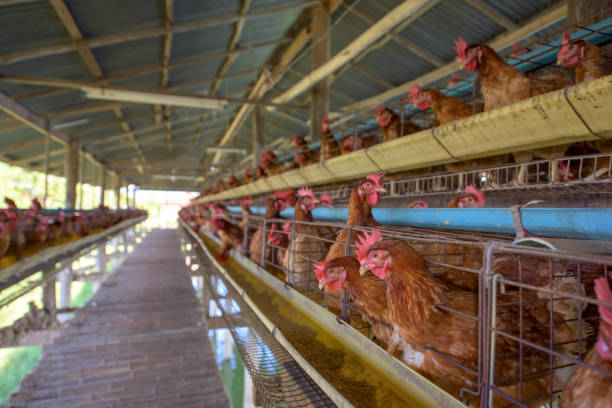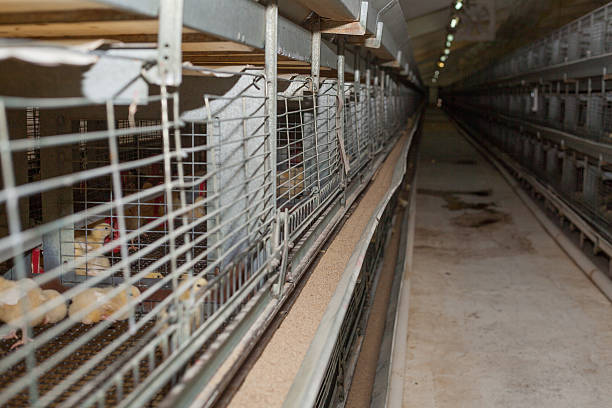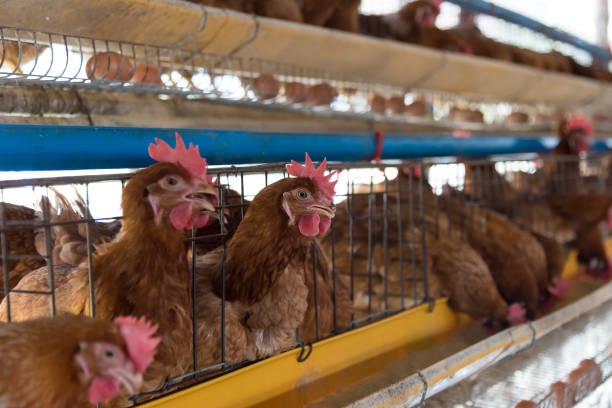Commercial Layer Chicken Cages in Zimbabwe – Livi Farm Solutions
Commercial Layer Chicken Cages in Zimbabwe – Livi Farm Solutions
Running a successful commercial egg production business in Zimbabwe starts with one fundamental decision: investing in the right layer chicken cages. As poultry farming continues to grow across the country—driven by rising protein demand and government support for agriculture—more farmers are turning to modern, efficient solutions to scale operations. At Livi Farm Solutions, we specialize in designing and delivering high-performance commercial layer chicken cages that meet the unique climate, infrastructure, and operational needs of Zimbabwean farms.
Layer cages aren’t just about housing chickens—they’re about maximizing productivity, minimizing labor, improving bird health, and ultimately boosting profits. That’s why it’s crucial to choose a system built for durability, ease of use, and long-term value. Our cages are designed using corrosion-resistant galvanized steel, which is especially important in Zimbabwe’s seasonal humidity and temperature shifts. With proper ventilation, easy egg collection trays, automatic feeding and drinking systems (optional), and tiered configurations from 2 to 4 levels, our layer cages give you full control over your farm’s efficiency.
Whether you’re setting up a new laying unit or upgrading an old backyard-style operation, selecting the right cage type makes all the difference. We offer several models tailored for different flock sizes—ranging from small-scale setups (500 birds) to large commercial farms (over 10,000 layers). Each model comes with customizable features like manure belts, nipple drinkers, mesh floor angles for optimal droppings fall, and space-saving stacking frames. This modular flexibility means you can start small and expand as your business grows, without scrapping your initial investment.
We also understand that reliable after-sales service and technical advice are just as important as the product itself—especially when operating in remote areas. That’s where Livi stands out. We don’t just ship containers; we provide full guidance—from layout planning based on your shed dimensions, to installation instructions, training your staff, and ongoing maintenance tips. And if power isn’t always stable in your region? No problem. We offer manual alternatives and solar-compatible automation packages so your farm keeps running smoothly, even during grid fluctuations.
What Makes Livi’s Layer Cages Ideal for Zimbabwe Farms?
When evaluating layer cages, Zimbabwean farmers often face a tough choice: go cheap and risk frequent breakdowns, or invest in quality and enjoy years of hassle-free operation. At Livi, we firmly believe the second option pays off—and here’s why our customers across Africa consistently choose us.
First, our cages are built to last. Using hot-dipped galvanized wire mesh and powder-coated frames, they resist rust better than standard materials, even under high-moisture conditions near Lake Kariba or the Eastern Highlands. The cage floors are engineered at the perfect incline—around 8 degrees—so eggs roll gently into collection channels without breaking, reducing wastage significantly. Plus, the vertical space design allows natural airflow, critical during Harare’s hot summers when temperatures can exceed 33°C.
Second, animal welfare matters. Our spacious perches and anti-foot injury mesh ensure hens stay healthy and stress-free, which directly translates into higher egg production and fewer sick birds. A happy hen lays more! Each standard compartment comfortably houses 4–6 hens, depending on local regulations and breed size (such as Isa Brown or Hy-Line), giving them room to move while remaining secure from predators and disease outbreaks.
Third, labor savings are huge. With fully automated feeding, watering, and manure removal options, a single worker can manage thousands of birds efficiently. Think about this: instead of spending hours refilling feed troughs or clearing droppings, farmers can redirect time toward monitoring bird behavior, vaccination schedules, or even expanding their market reach. Over time, these efficiencies compound into real profit growth.
And because every farm is different, we make customization easy. Need lower tiers for easier access due to back strain concerns? Done. Want adjustable cage doors for quicker cleaning cycles? Possible. Planning integration with solar-powered egg collection conveyors? Let’s talk. Our engineering team works closely with clients to tweak designs before manufacturing, avoiding costly mistakes later.
How to Choose the Right Cage System for Your Farm Size
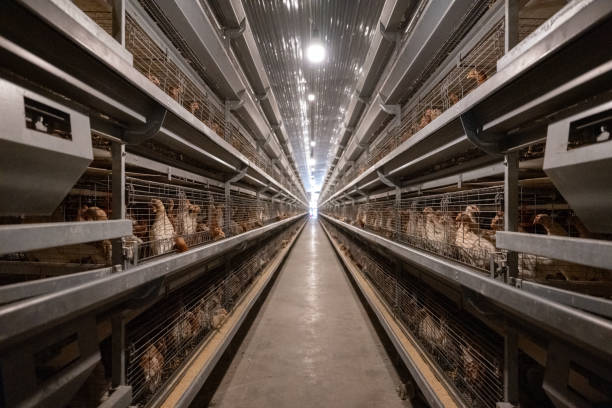
One common mistake new poultry entrepreneurs make is buying equipment that doesn’t match their actual needs. Too big leads to idle capacity and wasted capital. Too small forces early replacement—a major setback financially. So how do you get it right?
Start by estimating your target output. If you aim to supply 500 trays of eggs per week (assuming 30 eggs per tray), that means you need roughly 9,000–10,000 laying hens in production. From there, calculate how much barn space you have available. Our general rule: allow around 650 cm² of floor space per bird inside the cage—not including walkways, storage, or equipment zones. For example, a 7m x 40m house gives you 280 m² usable area, enough for a three-tier system housing up to 12,000 birds efficiently.
Next, decide between A-frame (back-to-back) units and阶梯式(side-by-side). A-frame saves floor space but requires wider buildings. Side-by-side allows simpler ventilation setup and easier access from both sides, ideal for narrow structures. Both types work well in Zimbabwe’s typical brick-and-roof sheds, but proper roof insulation and cross-ventilation are non-negotiable during October heatwaves.
Also consider future scalability. Will you add another shed next year? Choosing a cage brand that offers expansion kits avoids compatibility issues down the road. Ours are standardized across batches, so additional sections snap into place seamlessly.
Finally, budget wisely—not just for purchase price, but total cost of ownership. Include transport, import duties (we help with CIF quotes to Harare or Beira port), installation tools, spare parts, and expected lifespan. While some low-cost imported cages may seem attractive upfront, many fail within two years due to thin gauge wire or weak joints. Livi cages typically last 12–15 years with basic upkeep, making them far more economical over time.
Ready to Upgrade Your Egg Farm? Let Us Help
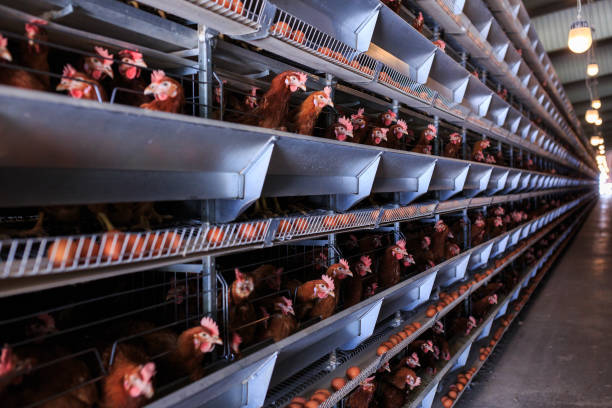
If you’ve been searching for reliable, high-quality commercial layer chicken cages in Zimbabwe, look no further. Livi Farm Solutions has helped hundreds of poultry farmers across Southern Africa turn their vision into profitable reality. Our cages aren’t just products—they’re part of a complete farming solution backed by expert support every step of the way.
From the moment you contact us, we treat your project personally. Whether you’re converting a maize store into a poultry unit or launching a flagship agribusiness, we’ll create a customized plan that fits your resources, goals, and local environment. We offer flexible shipping via sea or land container, fast delivery timelines, and clear communication throughout the process.
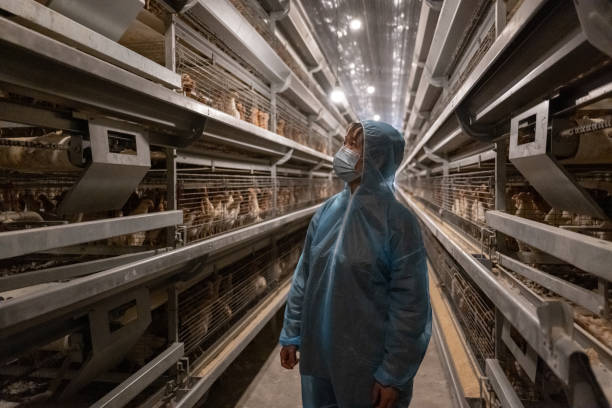
Don’t leave your farm’s success to guesswork. See how modern layer cages can increase your daily egg yield, reduce feed waste, cut labor costs, and improve hygiene standards—all while keeping your birds healthier and happier.
Get in touch today with your farm details—number of birds, building size, location—and we’ll send you a free layout design and quote within 24 hours. You can WhatsApp us, email your inquiry, or fill out a simple form on our website. Let’s build your dream poultry farm together.
Frequently Asked Questions (FAQ)
Can I install Livi cages myself, or do I need professionals?
You can absolutely install the cages yourself with our detailed assembly guide and labeled parts. Most customers, especially those with basic handyman skills, finish setup in 3–5 days. We also provide video tutorials and phone support during installation.
Are spare parts available locally in Zimbabwe?
Yes. We keep key spare components—like door hinges, trays, and drinker nipples—in stock and recommend ordering a backup kit with your main purchase. These spares last years, but having them on hand prevents downtime if something breaks unexpectedly.
How does shipping work from China to Zimbabwe?
We handle logistics through partnered freight forwarders. Options include sea freight to Beira or Walvis Bay ports, then truck delivery to your farm. Transit time is usually 30–40 days. We manage customs documentation and offer door-to-door service upon request.
Do the cages work during load-shedding or power outages?
Absolutely. Manual versions require zero electricity. For automated systems (feed lines, manure belts), we suggest pairing them with solar inverters or generators. Some clients run only the manure belt during scheduled outages—simple and effective.
Which breeds perform best in your cages?
Our cages suit all common commercial layers: Hy-Line White, ISA Brown, Shaver, Bovans, etc. Just confirm the average adult weight so we adjust perch spacing appropriately. Heavier birds need slightly larger compartments.
Is financing available for cage purchases?
Currently, we don’t offer direct financing, but we partner with agricultural development programs and cooperatives that do. Ask us—we might connect you with funding opportunities in your region.
Can I visit a working farm using Livi cages in Zimbabwe?
Yes! We coordinate visits to reference farms near Bulawayo and Marondera where our systems are already installed. Seeing the cages in action helps build confidence before buying.
How long does it take to receive my order?
Production takes 10–15 days after payment confirmation. Shipping adds 30–40 days depending on destination. Urgent orders can sometimes be expedited—just ask us.
Do you provide warranties?
Yes. All our cages come with a 5-year structural warranty against manufacturing defects. Galvanization won’t peel or rust under normal use. Any damaged panels pre-delivery are replaced immediately.
Can I mix cage levels (e.g., 2-tier and 3-tier) in one house?
Of course. Many farms phase their growth by starting with 2-tier and adding 3-tier later. As long as flooring level aligns properly, integration is smooth. We advise during planning stage to avoid alignment issues.



